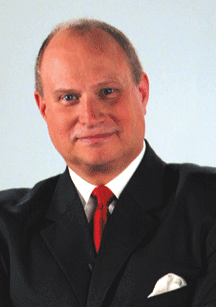A Man Of Many Talents
Is there anything Dan Gramza hasn't done? He's president of Gramza Capital Management and DMG Advisors, LLC. He is an author, trader, analyst, consultant to domestic and international clients, and an advisor to the St. Croix hedge funds. Gramza has also appeared on CNN's Moneyline program, Reuters TV, Bloomberg TV, Rob TV in Canada, and others.
Wait, there's more! He's developed and presented worldwide public and private courses for traders on candlestick analysis, Market Profile, technical analysis, options and options trading strategies, stock and futures industry fundamentals and operations, and Series 3 exam preparation. He's presented courses to traders from over 36 exchanges, 400 institutions, and 35 countries.
He's also a teacher. Gramza is an instructor for the Chicago Mercantile Exchange Education Center, the Chicago Mercantile Exchange/DePaul University Certificate Program, The Chicago Board of Trade, and the Chicago Stock Exchange.
STOCKS & COMMODITIES Editor Jayanthi Gopalakrishnan (JG) and Staff Writer Bruce Faber (BF) spoke with Dan Gramza on August 8, 2007, via telephone.

If you think about the change in the currency level itself, what does the movement in that currency actually reflect?
Dan, how did you get interested in trading and technical analysis?
It started when I was at the university. I found stock options very interesting. It was in the mid-1970s, not too long after they started trading, and I started following those. One thing led to another, and that was how I got introduced to the technical approach.
JG: Let's focus on the forex markets. What affects the movements in the forex markets?
From my perspective, the place to begin is to think about what you would want to see if you were going to invest in another country. Those are the things that also affect that currency. For example, the forex markets would be affected by economic trends, political stability, social changes and conditions, interest rates -- which have a huge impact on currencies -- inflation, and international trade. Is there a trade deficit? Are more items being imported than exported? You could look at the equivalent of the consumer price index for that country, or the cost of producing goods. You could look at the gross domestic product, the measure of value of all the goods produced in that country. The fundamental trader focuses on how others will react to this information. If these fundamentals are positive or strong, the expectation is that other people will recognize that and enter the market. Those are some of the areas that will have an impact on currency prices.
JG: What do the movements in these markets reflect?
If you think about the change in the currency level itself, what does the movement in that currency actually reflect? It represents the change in value of one currency in terms of another. So any time there is a rate change, it means one currency is getting stronger and the other is getting weaker. Which currency is getting stronger, which weaker? In the forex or currency markets, all trades are done in pairs. The order of the currency in the pair will tell you which is getting stronger, or which is getting weaker.
So a currency rate is the cost of the first currency expressed in terms of the second. Take the British pound vs. the US dollar. Since the British pound is the first variable we see there, it would be the value of one British pound in terms of US dollars. If we say the rate is $2.00 it means the cost of one British pound per US dollars equals $2.00. So if I went to the bank to buy a British pound it would cost me $2.00.
If we reverse that, US dollarsBritish pound, then that would mean a rate that would represent the value of one dollar, now in terms of British pounds. If it was a $2.00 rate, it would be a 0.5 rate for British pounds, which means one US dollar would buy half a British pound.
JG: What else does it reflect?
Let's take the euro. Say the euro rises from 1.3000 to $1.40. That would
mean it would cost us 10 cents more to buy one euro. The euro has gotten
stronger and the US dollar has gotten weaker. So we always have that inverse
relationship. This change in value would also affect the cost of doing
business between the countries represented by these two currencies. So
it would now cost people who deal in US dollars more to buy goods that
are priced in euros. For those using euros to buy goods priced in US dollars,
it would mean the US dollar has become cheaper. In the US, people are not
really used to thinking about currencies, but if we go to other countries
they are used to thinking about the relationship of one currency to another.
...Continued in the October 2007 issue of Technical Analysis
of STOCKS & COMMODITIES
Excerpted from an article originally published in the October 2007
issue of Technical Analysis of STOCKS & COMMODITIES magazine. All rights
reserved. © Copyright 2007, Technical Analysis, Inc.
Return to October 2007 Contents